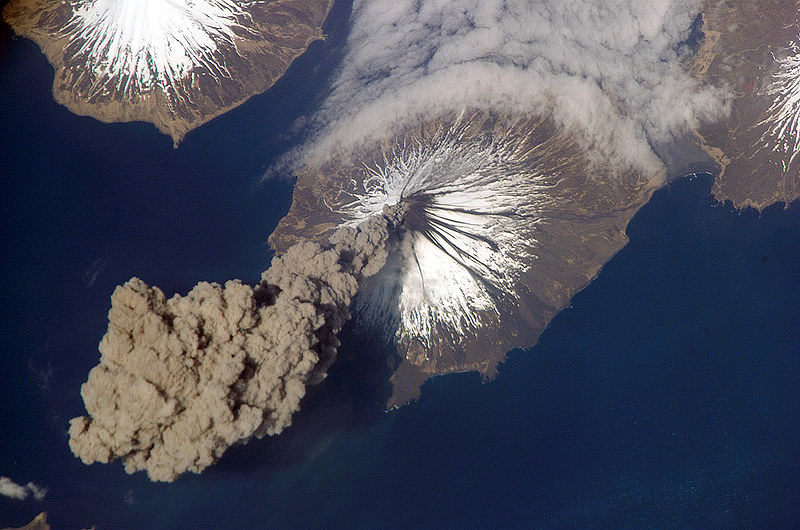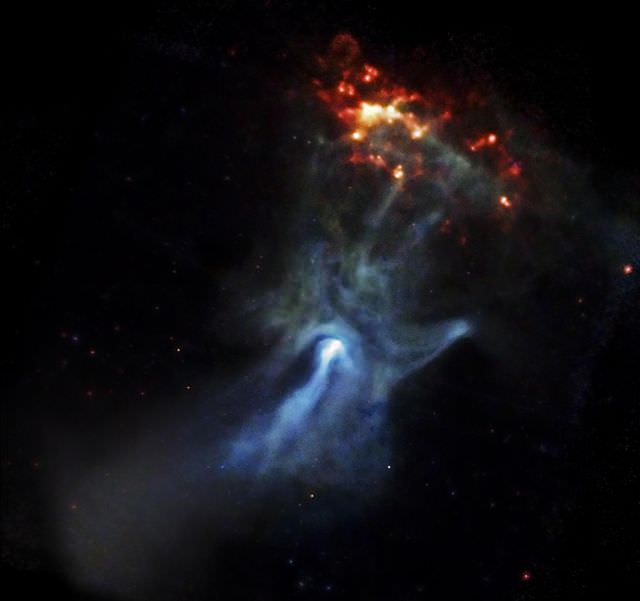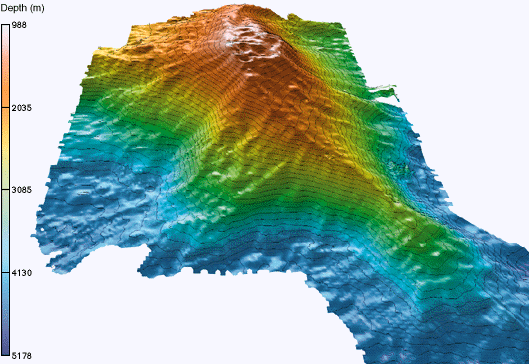[/caption]
Volcanoes can erupt with ash and rocks, but one of the most common images are great rivers of molten lava streaming from the volcano’s vent. This molten lava is made of rock, heated to more than 700 degrees C inside the Earth. Inside the Earth, it’s called magma, but when it reaches the surface, scientists call it molten lava.
You might be surprised to know that there are many different kinds of molten lava, depending on the chemical structure of the rock itself. This structure defines how viscous the lava is; how easily it flows. Think of the difference between water and syrup. Syrup is very viscous. Molten lava can be 100,000 times as viscous as water.
The least viscous lava can flow great distances from a volcano during an eruption, sometimes traveling many kilometers, destroying everything in its path. Volcanoes with this kind of molten lava are called shield volcanoes and they take on a very wide, low appearance, since the lava can flow so far. Other types of lava are thicker, or more viscous. It only travels a short distance in thick, crumbling flows. And some molten lava is so thick that it doesn’t really flow at all. It just piles up around the volcanic vent.
When it first erupts from the volcanic vent, molten lava can be anywhere from 700 to 1200 degrees Celsius. The thickness (or viscosity) defines how the lava behaves as it leaves the vent, and how far it can flow downhill before cooling and solidifying. Even though it looks solid, a lava flow can remain hot for weeks and even years before it finally cools.
As scary as it looks, molten lava really isn’t that dangerous for people. You can easily outrun a lava flow. Of course, buildings and trees aren’t so lucky since they’re attached to the ground.
We have written many articles about volcanoes for Universe Today. Here’s an article about the largest volcano in the Solar System, and here’s an article about the biggest volcano on Earth.
Want more resources on the Earth? Here’s a link to NASA’s Human Spaceflight page, and here’s NASA’s Visible Earth.
We have also recorded an episode of Astronomy Cast about Earth, as part of our tour through the Solar System – Episode 51: Earth.








